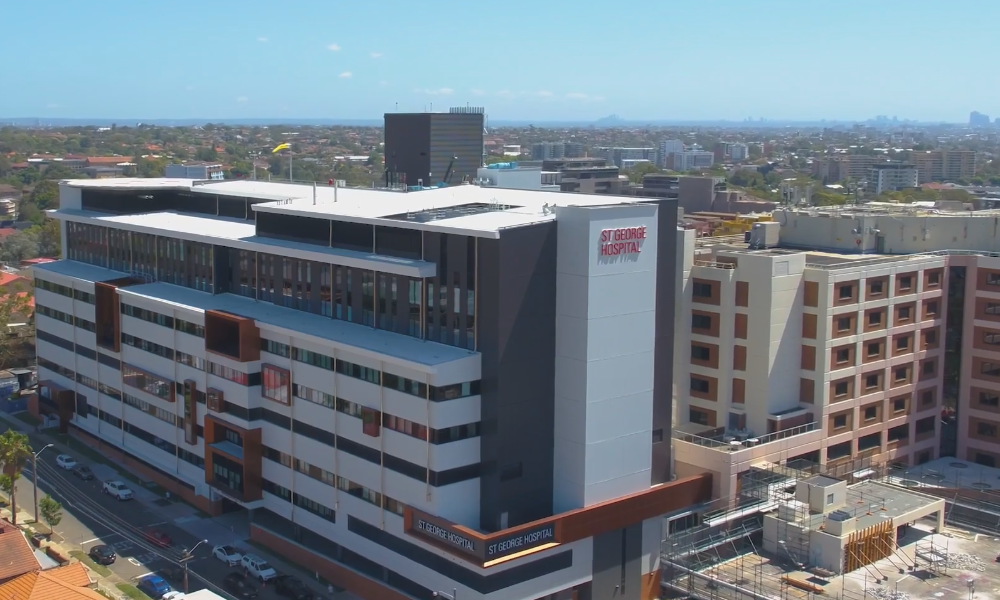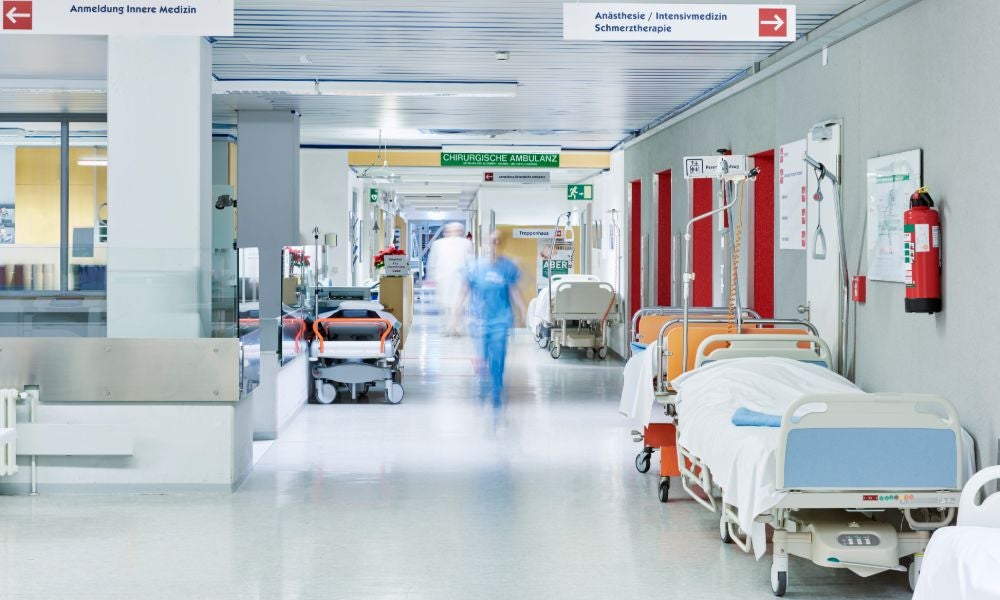Why hospital rivals make better economic neighbours
New research examines why private hospitals co-locate with public competitors and how this affects pricing, access and patient outcomes
Healthcare systems face mounting challenges of rising costs, resource constraints, and demands for accessible, high-quality care. In Australia, hospital care consumed $107 billion in 2022-23, representing 42% of all health expenditure, according to the Australian Institute of Health and Welfare. With public hospitals receiving $85.6 billion and private hospitals $21.5 billion, the efficient functioning of this sector is critical to national economic health.
The location of a hospital is one of the most critical decisions in healthcare planning, with long-term consequences for accessibility, costs, and patient outcomes. A hospital’s placement influences how quickly patients receive care, how much they pay, and whether they opt for public or private services. For private hospital operators, location decisions also determine financial viability, market competition, and pricing power.
New UNSW Business School research reveals that the physical location of hospitals – specifically, the co-location of private and public facilities – can reshape market dynamics in unexpected ways that benefit both hospitals and patients. The findings challenge conventional economic wisdom about competition and proximity.
Why competitors choose to share territory
The Australian healthcare landscape presents a puzzling phenomenon: private and public hospitals frequently operate side by side, sometimes in the same building. In this dual system, private hospitals provided 41% of all admitted patient care in 2021-22, including 70% of elective surgeries and 62% of mental health services. With 700 public and numerous private hospitals serving a population of 26 million, location decisions significantly impact both operational viability and patient access.
“There are numerous instances where private and public hospitals operate in close proximity, sometimes even within the same building,” said Joshua Wang, a recent Honours graduate and casual academic at the School of Economics at UNSW Sydney. “For example, St George Public and St George Private Hospital are located on the same campus and share resources, while The Prince of Wales Public and Private Hospitals are located within the same building in Randwick.”

This pattern raises a fundamental economic question: why would private hospitals deliberately position themselves near public competitors rather than seeking locations with less immediate competition? Part of the answer lies in Australia’s healthcare history. Before the 1980s, hospital services were predominantly public, with private providers operating at a smaller scale. Government policy then shifted to encourage private sector participation.
“In the 1980s, the Australian government actively encouraged private sector participation in healthcare on a much larger scale. The goal was to create a more competitive market that expanded service options for consumers. One way this was facilitated was by allowing new private hospitals to co-locate with public hospitals, reducing their initial fixed costs.”
This transition towards mixed public-private healthcare delivery occurred in other countries too, including Poland and China. However, whether co-location was indeed the most profitable action remained questionable.
The economics of hospital location
Mr Wang’s Honours Thesis, Co-Location of Private and Public Hospitals, utilised a spatial competition model based on Salop’s framework to analyse how price, quality, waiting times, and travel costs influence location decisions. The public hospital’s price and quality were treated as constants, allowing researchers to examine how private hospitals respond to consumer behaviour.
“We developed a theoretical framework where both public and private hospitals offer an identical service but differ in price, quality and waiting times, while also accounting for consumer travel costs,” said Mr Wang, who won a university medal in recognition of his outstanding academic performance for his thesis, which was supervised by UNSW Business School Professor of Economics Arghya Ghosh.
Read more: How mindfulness can help tackle healthcare’s burnout crisis
These factors are particularly relevant in Australia’s healthcare environment, where public hospital services received $77.2 billion in funding in 2021-22, while private hospitals received $18.8 billion. Waiting times also feature prominently in consumer decision-making – in 2023-24, half of all patients admitted for elective surgery from public hospital waiting lists waited 46 days or more, creating incentives for patients to consider private alternatives despite higher costs.
The research found that the larger the quality difference between the private and public hospitals, the more it makes sense for the private hospital to co-locate because their product is more distinct from the public hospital’s. This allows the private hospital to charge a high price and attract many consumers, despite being near a cheaper public alternative.
When proximity makes economic sense
The findings reveal that the profitability of co-location depends on several factors, particularly the quality difference between private and public hospitals. “One of the key takeaways from our research is that whether co-location is a good strategy for private hospitals depends on several economic trade-offs. In addition, the location arrangement that is profitable for the private many not always align with what is optimal for most consumers,” said Mr Wang.
Contrary to intuitive assumptions, the research showed that private hospitals might choose co-location even without cost-sharing benefits. “While this is likely untrue, we deliberately started with a simpler model that assumed no such cost savings,” Mr Wang noted. “This allowed us to isolate the competitive effects of co-location to see whether it could make sense for private hospitals even in the absence of cost efficiencies.”

When quality differences between hospitals are substantial, co-location becomes more profitable for private facilities. Patients perceive the hospitals as distinct products – one offering affordability and accessibility, the other providing premium quality and shorter waiting times. “By co-locating, the private hospital ensures it remains within reach of consumers who want a higher-quality service but might otherwise choose the public hospital due to high travel costs,” Mr Wang explained.
However, when quality differences are minimal, private hospitals fare better with independent locations. In such cases, patients view the hospitals as interchangeable, making their choices based primarily on convenience factors like proximity and wait times. “If a private hospital positions itself too closely to a public hospital under these conditions, it faces stronger competition without sufficient quality differentiation to justify higher prices,” said Mr Wang.
The patient perspective on hospital locations
The research uncovers an intriguing disconnect between hospital preferences and patient benefits. In a healthcare system with 12.1 million annual hospitalisations (415 per 1000 population) spread across public (59%) and private (41%) hospitals, location decisions have far-reaching implications for accessibility and cost.
“For consumers, the ideal location arrangement depends on the size of the quality difference. If the difference is very small or very large, consumers prefer the private hospital to choose an independent location,” Mr Wang stated.
Read more: Protecting your privacy: should AI write hospital discharge papers?
When quality differences are minor, patients benefit from hospitals being geographically dispersed, which improves overall accessibility. Similarly, when quality gaps are substantial, patients also prefer separation because those living near private hospitals save on travel costs while still having the option to access more affordable public care elsewhere.
The most revealing finding appears when quality differences are moderate. In these cases, patients benefit more from co-location, while private hospitals prefer isolation to maintain pricing power. “For moderate quality differences, consumers prefer co-location. In this case, the competition that comes from being close to a public hospital helps temper the private hospital’s moderate pricing power so that prices are kept lower for all consumers,” said Mr Wang.
This creates what economists call a market failure – a situation where market forces alone do not produce the most beneficial outcome for society. “This suggests that, in some cases, there may be ‘insufficient co-location’ from a consumer welfare perspective – private hospitals do not choose to co-locate as often as would be socially optimal,” Mr Wang observed.
Beyond theoretical models: Real-world applications
When the research model incorporated cost efficiencies from shared resources – a reality in many co-located facilities – the case for co-location strengthens considerably. These efficiencies are especially significant given the scale of hospital operations: public hospitals alone employ 448,000 full-time equivalent staff, including 186,000 nurses and 56,700 doctors, representing substantial operational costs.
“When we extend the model to incorporate cost efficiencies from co-location – such as lower fixed costs and shared resources – the case for co-location becomes stronger. Private hospitals have a greater incentive to co-locate because they can reduce costs, and consumers benefit because some of those savings are passed on in the form of lower prices,” Mr Wang explained.

These findings suggest that government policies encouraging co-location through subsidies or incentives could benefit both hospitals and patients, particularly when cost-sharing possibilities exist.
The implications also extend beyond healthcare. The same principles could apply to any service where customers must travel to providers, quality varies between options, and congestion affects the experience, from coffee shops to educational institutions.
Practical takeaways for business leaders
This research offers strategic insights for decision-makers in both healthcare and other industries. For private hospital operators, location decisions should factor in quality differentiation. When service quality substantially exceeds competitors, proximity can be advantageous. When quality differences are minor, geographical separation may prove more profitable.
For government policymakers, the research suggests opportunities for targeted interventions. When moderate quality differences exist between public and private providers, incentives for co-location could enhance consumer welfare through increased competition and improved accessibility.
Subscribe to BusinessThink for the latest research, analysis and insights from UNSW Business School
For business strategists across sectors, the findings highlight the need to consider how location decisions affect competitive dynamics. Conventional wisdom suggests competitors should distance themselves, but in markets with quality differentiation and travel considerations, proximity to rivals might create unexpected advantages.
The research also demonstrates the importance of considering both fixed and operational costs in location decisions. Cost efficiencies from shared resources or infrastructure can alter the competitive equation significantly, making co-location beneficial even in situations where it might otherwise reduce pricing power.
Understanding these economic trade-offs enables more informed location strategies that balance profitability with consumer accessibility. By recognising when co-location creates value – and for whom – businesses can make location decisions that serve both their bottom line and their customers’ needs.
